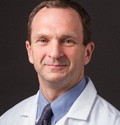 MedicalResearch.com Interview with:
Aileen Gariepy, MD, MPH
MedicalResearch.com Interview with:
Aileen Gariepy, MD, MPH
Assistant Professor Section of Family Planning
Department of Obstetrics, Gynecology, and Reproductive Sciences
Yale School of Medicine
New Haven, CT
Medical Research: What is the background for this study? What are the main findings?
Dr. Gariepy: Women who have just given birth are often highly motivated to prevent a rapid, repeat pregnancy. For women who desire the contraceptive implant, a highly effective reversible form of contraception that is placed in the arm and can last for 3 years, new research shows that it is more cost-effective to place the implant while women are still in the hospital after giving birth, compared to delaying insertion to the postpartum visit 6-8 weeks later which is currently the most common practice.
When the costs associated with the implant insertion and the costs of unintended pregnancy are compared in women who receive immediate contraceptive implant insertion (while still in the hospital after giving birth) to women who are asked to come back in 6-8 weeks for the implant insertion (delayed insertion), immediate insertion is expected to save $1,263 per patient. Based on these estimates, for every 1,000 women using postpartum implant, immediate placement is expected to avert 191 unintended pregnancies and save $1,263,000 compared with delayed insertion in the first year. Cost savings would continue to increase for the second and third year after insertion.
In fact, over half of U.S. pregnancies are unintended. Maternal and infant care costs for
unintended pregnancies amount to $11.1 billion annually for public insurance programs alone. The immediate postpartum period (after delivery but before discharge home) provides an ideal opportunity for initiating contraceptives as patients are motivated and timing is convenient.
However, the majority of insurance company policies do not provide coverage for insertion of the contraceptive implant when the new mother is still in the hospital. This lack of reimbursement is the most significant barrier to providing this highly effective contraceptive method for women who have just delivered a baby. Surprisingly, the reason most insurance companies do not offer reimbursement for immediate insertion is due to an outdated insurance protocol, “the global obstetric fee” which precludes separate reimbursement of individual procedures (like inserting the implant).
The main reason that immediate insertion results in cost savings is because more women will get the implant compared to a strategy of delayed insertion. Women can get pregnant again within 4 weeks of delivering a baby. Starting contraception as soon as possible after giving birth is important because most women will resume sexual activity before their postpartum office visit and therefore will be at risk of pregnancy. And approximately 35% of women do not return for a postpartum visit.
Even for women who want another pregnancy soon, the implant has benefits. When women conceive and deliver a baby within 2 years of last giving birth, there is a significantly higher risk of poor maternal and neonatal outcomes, including preterm birth, low birth weight, and even early neonatal and maternal death. Birth spacing is better for moms and babies.
(more…)





















